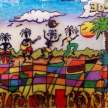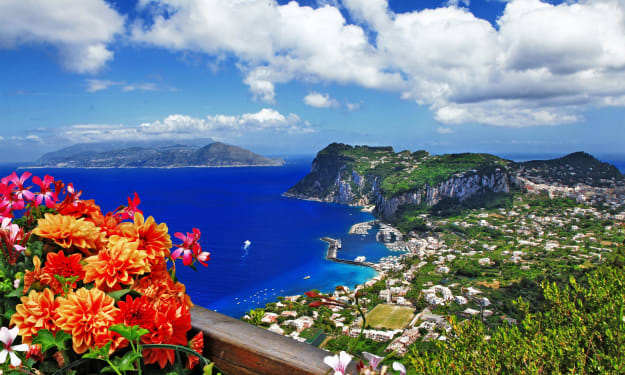A Few Things We Don't Quite Get About the Levant!
This article delves into some common misconceptions about the Levant, revealing the complexity and nuance that characterize this fascinating region.

Introduction:
The Levant, a historical and cultural region in the Eastern Mediterranean, encompasses parts of modern-day Lebanon, Syria, Jordan, Israel, Palestine, and Turkey. It has been a crossroads of civilizations, religions, and empires for millennia. Despite its rich tapestry of history and culture, the Levant is often misunderstood or oversimplified in Western discourse. This article delves into some common misconceptions about the Levant, revealing the complexity and nuance that characterize this fascinating region.
1. The Levant is Not a Monolithic Culture
Cultural Diversity
One of the most persistent misconceptions about the Levant is that it represents a single, homogeneous culture. In reality, the Levant is a mosaic of diverse ethnicities, languages, and religions. From the Phoenicians and Canaanites of ancient times to the myriad communities that inhabit the region today, the Levant is a tapestry woven from various cultural threads.
Modern Diversity:
Ethnic Groups: Arabs, Kurds, Armenians, Druze, Assyrians, and Circassians, among others.
Languages: Arabic, Hebrew, Aramaic, Armenian, Kurdish, and Turkish, to name a few.
Religions: Islam (Sunni and Shia), Christianity (various denominations), Judaism, Druze, Yazidism, and others.
This cultural diversity contributes to the Levant’s rich heritage but also its complex social dynamics, often leading to misconceptions that it can be understood through a singular lens.
Historical Influences
The Levant has been influenced by numerous empires and civilizations, including the Egyptians, Babylonians, Persians, Greeks, Romans, Byzantines, and Ottomans. Each of these powers left its mark, shaping the region’s culture, architecture, language, and traditions. For instance, the architectural marvels of Roman-era Baalbek in Lebanon stand alongside Byzantine churches and Ottoman mosques, illustrating the region’s layered history.
2. Misunderstanding the Geopolitical Complexity
Colonial Legacies
Western understanding of the Levant is often shaped by colonial histories and narratives. The borders and political structures of the modern Levant were largely defined by European powers in the aftermath of World War I, particularly through the Sykes-Picot Agreement. This division often ignored existing ethnic, religious, and cultural boundaries, sowing seeds of conflict that persist to this day.
Impact of Colonialism:
Arbitrary Borders: Artificial borders often split communities and grouped disparate groups together, leading to tensions.
Mandates and Protectorates: The establishment of British and French mandates over territories in the Levant created power imbalances and resistance movements.
Current Conflicts and Alliances
The modern geopolitical landscape of the Levant is highly complex, involving a web of alliances, conflicts, and interests both within and beyond the region. The Israeli-Palestinian conflict, the Syrian civil war, and the rise of militant groups like Hezbollah and ISIS have garnered global attention but are often oversimplified in media portrayals.
Key Issues:
Territorial Disputes: The Israeli-Palestinian conflict revolves around land, sovereignty, and national identity.
Civil Strife: Syria’s civil war involves multiple factions, foreign interventions, and humanitarian crises.
Sectarian Tensions: Shia-Sunni divisions influence politics and conflicts in countries like Lebanon and Syria.
Understanding the Levant requires a nuanced appreciation of these issues, acknowledging that there are no simple solutions to the region’s complex problems.
3. Religion Beyond Headlines
Religious Pluralism
Religion plays a central role in the identity and daily lives of people in the Levant. However, the region’s religious landscape is often reduced to headlines about conflict and extremism. In truth, the Levant is a region of remarkable religious pluralism and coexistence, with a history of communities living side by side, sharing traditions and spaces.
Examples of Coexistence:
Lebanon: Home to a diverse religious population, including Maronite Christians, Sunni and Shia Muslims, Druze, and others. Despite political tensions, everyday interactions often reflect coexistence and mutual respect.
Israel and Palestine: While the political conflict is deeply rooted, there are instances of interfaith initiatives and community efforts to promote understanding and peace.
Spiritual Heritage
The Levant is the cradle of major world religions, including Judaism, Christianity, and Islam. The region’s religious sites, such as Jerusalem’s Old City, the Church of the Nativity in Bethlehem, and the Umayyad Mosque in Damascus, are of profound spiritual significance.
Religious Landmarks:
Jerusalem: Sacred to Jews, Christians, and Muslims, it houses the Western Wall, the Church of the Holy Sepulchre, and the Al-Aqsa Mosque.
Bethlehem: Known for the Church of the Nativity, believed to be the birthplace of Jesus Christ.
Damascus: Home to the Umayyad Mosque, one of the oldest and largest mosques in the world.
These sites attract pilgrims and visitors from around the globe, underscoring the Levant’s importance to religious history and practice.
4. Economic Realities and Aspirations
Economic Challenges
Economic challenges in the Levant are often depicted through the lens of conflict and instability. While these factors undoubtedly impact the region, they do not define the entirety of its economic landscape. Countries in the Levant face a range of economic issues, including unemployment, inflation, and resource scarcity, but also show resilience and potential for growth.
Common Challenges:
Unemployment: High unemployment rates, especially among youth, contribute to economic difficulties.
Inflation and Currency Devaluation: Economic instability can lead to inflation and loss of currency value, as seen in Lebanon’s recent crisis.
Resource Management: Water scarcity and agricultural challenges affect food security and economic stability.
Economic Opportunities
Despite challenges, the Levant also has significant economic potential. The region’s strategic location, human capital, and natural resources offer opportunities for development and growth.
Opportunities for Growth:
Tourism: Rich cultural heritage and historical sites make the Levant a potential tourism hotspot. Countries like Jordan, with Petra, and Lebanon, with its vibrant cities, have developed tourism sectors.
Technology and Innovation: Emerging tech hubs in cities like Amman and Beirut are fostering innovation and entrepreneurship.
Renewable Energy: Solar and wind energy projects are being developed to address energy needs and reduce dependence on fossil fuels.
5. The Role of Women in Society
Women’s Contributions
The role of women in the Levant is often misunderstood or overlooked. Women in the region have made significant contributions to society, culture, and politics, challenging stereotypes and advocating for their rights.
Examples of Women’s Contributions:
Politics: Women have held prominent political positions, such as Tawakkol Karman in Yemen (which is part of the broader Middle East, showing regional connections) and Joumana Haddad in Lebanon.
Arts and Culture: Female artists, writers, and filmmakers from the Levant have gained international recognition, exploring themes of identity, gender, and social justice.
Activism: Women’s rights activists in the Levant work on issues such as gender equality, education, and healthcare.
Challenges and Progress
While progress has been made, women in the Levant still face significant challenges, including legal and societal barriers to equality. Efforts to promote women’s rights and gender equality continue to be an important part of the region’s social development.
Challenges:
Legal Discrimination: Women often face legal inequalities in areas such as inheritance, marriage, and divorce.
Social Norms: Traditional gender roles and expectations can limit women’s opportunities and participation in public life.
Progress:
Education: Increased access to education for women and girls has led to greater participation in the workforce and public life.
Legal Reforms: Some countries in the Levant have implemented legal reforms to address gender discrimination and promote equality.
6. Environmental Concerns
Environmental Degradation
Environmental issues in the Levant are often overshadowed by political and economic concerns. However, the region faces significant environmental challenges, including water scarcity, pollution, and habitat loss.
Key Environmental Issues:
Water Scarcity: Limited water resources and over-extraction are critical issues, exacerbated by climate change and population growth.
Pollution: Industrial activities, urbanization, and inadequate waste management contribute to air and water pollution.
Biodiversity Loss: Habitat destruction and environmental degradation threaten the region’s biodiversity, including unique ecosystems and species.
Conservation Efforts
Efforts to address environmental issues in the Levant are underway, involving both local initiatives and international cooperation. Conservation projects, sustainable development practices, and environmental education are key components of these efforts.
Examples of Conservation:
Protected Areas: Establishing nature reserves and protected areas to preserve biodiversity and ecosystems.
Sustainable Agriculture: Promoting sustainable farming practices to reduce environmental impact and ensure food security.
Community Engagement: Involving local communities in conservation efforts to foster stewardship and sustainable resource management.
Conclusion
Understanding the Levant requires moving beyond stereotypes and simplifications to appreciate its complexity and diversity. From its rich cultural mosaic and historical depth to its geopolitical intricacies and environmental challenges, the Levant is a region that defies easy categorization.
By exploring these nuanced aspects, we gain a deeper appreciation for the Levant and the factors that shape its unique identity. Whether through its cultural heritage, religious significance, economic potential, or environmental concerns, the Levant continues to be a dynamic and integral part of the global tapestry.
For those willing to look beyond the headlines and engage with the region’s multifaceted reality, the Levant offers a wealth of insights and experiences that enrich our understanding of the world.
About the Creator
ED CLEFF
I have over a decade of experience in crafting compelling and diverse content. My portfolio spans multiple industries, including technology, healthcare, finance, and lifestyle, given me an added advantage in all my areas of specialization.
Enjoyed the story? Support the Creator.
Subscribe for free to receive all their stories in your feed. You could also pledge your support or give them a one-off tip, letting them know you appreciate their work.






Comments
There are no comments for this story
Be the first to respond and start the conversation.